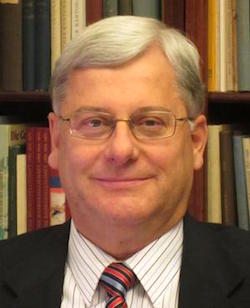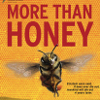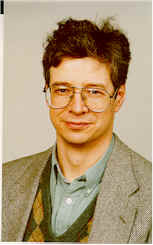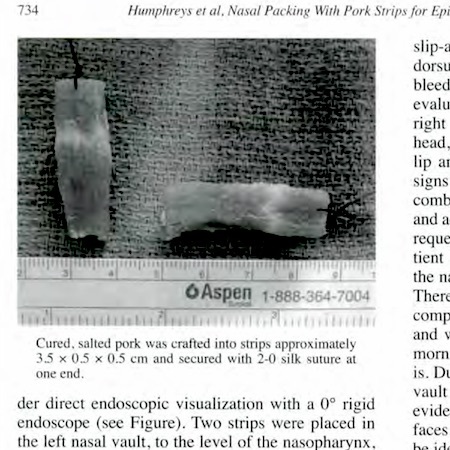Marc Abrahams's Blog, page 329
May 19, 2015
Sinnott-Armstrong on the Irresistible Impulse Rule
 Walter Sinnott-Armstrong (a possible case of nominative determinism), holds forth on the morality of the Irresistible Impulse Rule, in this study:
Walter Sinnott-Armstrong (a possible case of nominative determinism), holds forth on the morality of the Irresistible Impulse Rule, in this study:
“Insanity Defenses,” Walter Sinnott-Armstrong and Ken Levy, in Oxford Handbook on the Philosophy of the Criminal Law, p. 299, John Deigh & David Dolinko, eds., Oxford University Press, 2011. It says:
“We explicate and evaluate arguments both for and against the insanity defense itself, different versions of the insanity defense (M’Naghten, Model Penal Code, and Durham (or Product)), the Irresistible Impulse rule, and various reform proposals.”
BONUS: A while ago, we looked at another of his many morality papers.

May 18, 2015
‘ “God knows who figured this out,” he said. But it worked.’
Stanford Magazine (the university’s alumni magazine) profiles their latest Ig Nobel Prize winner. Dr. Ian Humphreys, together with three colleagues, was honored for treating “uncontrollable” nosebleeds, using the method of nasal-packing-with-strips-of-cured-pork:
…Typically, doctors would next resort to sealing off the nearby artery. But in this case, doing so could have left the child blind.
Running out of options, Humphreys dug into the medical literature. That’s when he stumbled upon the idea of using salt pork. Evidently, infantrymen during World War I put pork on their wounds to control bleeding until they could find medical care.
Robert Jackler, chair of Stanford’s otolaryngology, head and neck surgery department, said he’s found references to its use against nosebleeds in materials dating back to the 1800s.
“God knows who figured this out,” he said. But it worked.
After a brief discussion, Humphreys and his team decided to try it before resorting to a more dangerous procedure. They crafted two porcine plugs and inserted them into the girl’s nose. To everyone’s relief, the bleeding stopped. When she returned a month later with another nosebleed, the doctors knew just what to do.
Even now, doctors aren’t sure how the pork works. Wanting to spur further research on the subject, Humphreys’s team published a paper about the episode.
For their ingenuity, the group received the 2014 Ig Nobel Prize in Medicine…
Here is a detail from the Ig Nobel Prize-winning medical paper by Ian Humphries and his colleagues:

Creepy from Crawley? Study: Economic Growth Fueled by Male Sex Drive
Massive economic growth comes, in large part, from men’s competition to sexually attract women, sort of, suggests this study:
 “Sexual selection, conspicuous consumption and economic growth,” Jason Collins, Boris Baer, Ernst Juerg Weber [pictured here], Journal of Bioeconomics, epub May 19, 2015. The authors at the Business School, University of Western Australia, Crawley, Australia, and at the Centre for Integrative Bee Research (CIBER), ARC CoE in Plant Energy Biology, University of Western Australia, Crawley, Australia, explain:
“Sexual selection, conspicuous consumption and economic growth,” Jason Collins, Boris Baer, Ernst Juerg Weber [pictured here], Journal of Bioeconomics, epub May 19, 2015. The authors at the Business School, University of Western Australia, Crawley, Australia, and at the Centre for Integrative Bee Research (CIBER), ARC CoE in Plant Energy Biology, University of Western Australia, Crawley, Australia, explain:
We propose that the evolution by sexual selection of the male propensity to engage in conspicuous consumption contributed to the emergence of modern rates of economic growth. We develop a model in which males engage in conspicuous consumption to send an honest signal of their quality to females. Females prefer males who express the costly and honest signal, leading males who engage in conspicuous consumption to have higher reproductive success than those who do not, increasing the prevalence of signalling males in the population. As males fund their conspicuous consumption through participation in the labour force, an increase in the prevalence of signalling males gives rise to an increase in economic activity that leads to economic growth.
 (Thanks to Albert Wrangham for bringing this to our attention.)
(Thanks to Albert Wrangham for bringing this to our attention.)
BONUS: Also coming partly from the Centre for Integrative Bee Research: “More Than Honey“.

‘RTFM’ – is life too short?
 For some, ‘Life Is Too Short to RTFM’ say Professor Thea Blackler and colleagues at the School of Design, Queensland University of Technology (QUT), Australia. In the journal Interacting with Computers they explain that those who don’t tend to bother to RTFM (which they de-acronymize as ‘read the field* manual’) tend to be male, young-ish and more educated.
For some, ‘Life Is Too Short to RTFM’ say Professor Thea Blackler and colleagues at the School of Design, Queensland University of Technology (QUT), Australia. In the journal Interacting with Computers they explain that those who don’t tend to bother to RTFM (which they de-acronymize as ‘read the field* manual’) tend to be male, young-ish and more educated.
*Note: not everyone translates RTFM as politely as ‘Read the field manual’.
The photo shows QUT paper co-author Professor Vesna Popovic

Enders’s “Darm mit Charme”: What’s what about the gut
Giulia Enders gave seven-minute talk (at Science Slam Berlin) about being a medical student studying the gut. The talk got people talking, and got a a book publisher offering a book contract, and got Enders writing a book, and got lots of people reading that book after it was written. Here’s video of the talk, in German, called “Darm mit Charme”. The book has the same name, and is now also being published in other languages.
The Guardian has two articles that give details and an appreciation:
“Gut reaction: book celebrating digestive tract becomes German bestseller”
(Thanks to Adrian Smith for bringing this to our attention.)

May 17, 2015
The psychological search for drunk types
How many kinds of drunks are there? This study takes on that question:
“Searching for Mr. Hyde: A five-factor approach to characterizing ‘types of drunks’“, Rachel Pearl Winograd [pictured here], Douglas Steinley, and Kenneth Sher, Addiction Theory and Research, epub April 24, 2015. (Thanks to Maddalena Feliciello for bringing this to our attention.) The authors, at the University of Missouri-Columbia, explain:
Some individuals “change” more dramatically than others when intoxicated, and the nature and magnitude of these changes can result in harmful outcomes. This study utilized reports (N = 374) of participants’ “typical” five-factor model (FFM) characteristics across sober and intoxicated states and assessed the degree to which these reports could be grouped into meaningful clusters, as well as the association of cluster membership with negative alcohol-related consequences. Results from finite mixture model clustering revealed a four cluster solution. Cluster 1, “Hemingway,” was the largest and defined by intoxication-related decreases in Conscientiousness and Intellect that were below average; Cluster 2, “Mary Poppins,” was defined by being high in Agreeableness when sober, decreasing less than average in Conscientiousness and Intellect and increasing more than average in Extraversion when drunk; Cluster 3, “Mr. Hyde,” reported larger drunk decreases in Conscientiousness and Intellect and smaller increases in Extraversion; Cluster 4, “The Nutty Professor,” was defined by being low in Extraversion when sober, increasing more than average in Extraversion and decreasing less than average in Conscientiousness when drunk. Cluster membership was associated with experiencing more alcohol consequences. These results support use of the FFM to characterize clinically meaningful subgroups of sober-to-drunk differences in trait expression.

May 16, 2015
Divide and concur: A physics paper with 5,154 authors
A physics paper with 5,154 authors is the newest reached pinnacle in people’s drive to divide and concur, when there’s credit to be had. Those 5,154 physicists stand a-write on the collective shoulders of the 976 physicians who shared the 1993 Ig Nobel Prize for literature.
 That 1993 Ig Nobel prize was awarded to Eric Topol [pictured here], R. Califf, F. Van de Werf, P. W. Armstrong, and their 972 co-authors, for publishing a medical research paper which has one hundred times as many authors as pages. [The study was published in The New England Journal of Medicine, vol. 329, no. 10, September 2, 1993, pp. 673–82.]
That 1993 Ig Nobel prize was awarded to Eric Topol [pictured here], R. Califf, F. Van de Werf, P. W. Armstrong, and their 972 co-authors, for publishing a medical research paper which has one hundred times as many authors as pages. [The study was published in The New England Journal of Medicine, vol. 329, no. 10, September 2, 1993, pp. 673–82.]
The new, 5,154 physicist paper is: “Combined Measurement of the Higgs Boson Mass in pp Collisions at √ s = 7 and 8 TeV with the ATLAS and CMS Experiments,” G. Aad et al. [5,154 authors total] (ATLAS Collaboration), (CMS Collaboration), Physical Review Letters, 114, 191803, published 14 May 2015.
Davide Castelvecci, writing solo in Nature News, gives an appreciation of the 5,154:
Physics paper sets record with more than 5,000 authors
Detector teams at the Large Hadron Collider collaborated for a more precise estimate of the size of the Higgs boson.
A physics paper with 5,154 authors has — as far as anyone knows — broken the record for the largest number of contributors to a single research article.
Only the first nine pages in the 33-page article, published on 14 May in Physical Review Letters, describe the research itself — including references. The other 24 pages list the authors and their institutions.
The article is the first joint paper from the two teams that operate ATLAS and CMS, two massive detectors at the Large Hadron Collider (LHC) at CERN, Europe’s particle-physics lab near Geneva, Switzerland. Each team is a sprawling collaboration involving researchers from dozens of institutions and countries….
Here is the beginning of the new paper’s list of 5,154 co-authors, most of whom are still alive [according to the paper itself, not all of them are]:
BONUS: A fun calculation for you to perform with friends: How many minutes it would that take to read aloud the complete list of 5,154 co-authors?

May 15, 2015
‘Ludefaction’ defined
 If you haven’t come across the word ‘Ludefaction’ before, it may be because you haven’t seen the latest issue of the scholarly journal games and culture. There, the word is described by Graeme Kirkpatrick, Professor in Media Arts, Aesthetics & Narration at the University of Skövde, Sweden. as “the negative underside of ludification.” (see: Ludefaction : Fracking of the Radical Imaginary )
If you haven’t come across the word ‘Ludefaction’ before, it may be because you haven’t seen the latest issue of the scholarly journal games and culture. There, the word is described by Graeme Kirkpatrick, Professor in Media Arts, Aesthetics & Narration at the University of Skövde, Sweden. as “the negative underside of ludification.” (see: Ludefaction : Fracking of the Radical Imaginary )
The professor coined the word at the Clash of Realities 5th International Computer Game Conference in 2014 :
“[…] the play of joyless, repetitious routines, which drain the creative resources of the player. I call this ludefaction: an employment of the play principle that undermines our collective ability to imagine a better life.”

May 14, 2015
Superperson (girl, guy, whatever) glider: The patent
The new television series Supergirl [see below] shows the continuing public hunger to have flying superpersons. Thirty years ago, this hunger was very slightly served by a patented invention:
“Flying figure toy glider,” US patent 4512690, filed November 14, 1983 and issued Apr 23, 1985 to Mark E. Johnson of Escondito, California. The patent document gives details:
A toy glider includes a body portion of a low density lightweight construction such as foam having the appearance of a super hero with an opaque cape wing structure and a transparent extended portions of the wing structure attached to the back of the outstretched figure to provide a glider structure giving the appearance of a flying super hero.
Here are technical drawings from the patent:

Further detail, about the detail you see in the drawings:
A number of fantasy super heroes have been created particularly in the comic strips and in comic books to which many children readily relate. These figures, which include such heroes as “Superman”, “Captain Marvel”, “Superwoman”, “Mightly Mouse”, and others wear a cape and in their world of fantasy have the capability of flying through the air. Some attempts have been made in the past to make gliders of such figures. These, however, have been unsuccessful due to the inadequate support capability of the wing structure of the cape configuration.
Toy glider construction has found to require very critical wing area and structure and very critical weight-to-balance ratios. While many materials are available for the construction of gliders, few are available which provide the optimum structural integrity and weight combination in order to achieve the desired structure….
A wing structure for the figure is constructed of a sandwich construction having a primary or opaque cape configuration 26 which, as can be seen in FIG. 2, has a somewhat triangular outstretched cape configuration. This portion of the wing structure is preferably opaque and has the color and configuration of the cape of the particular super hero when the cape is in the outstretched flying configuration for the particular figure. In order to improve the flying capability of the figures, in accordance with the invention, forwardly extending transparent extensions 28 and 30 extend forward of the leading edge of the cape portion 26 to extend and expand the wing area of the figure. Additional trailing transparent wing extensions 32 and 34 are provided to further increase the wing surface area and to provide, as can be seen in FIGS. 1 and 3, a somewhat trim tab construction. With this wing construction, the transparent portions 28, 30, 32 and 34 essentially disappear from view as the figure flies through the air giving the distinct impression of the super hero in flight supported solely by his visible cape 26.
Behold the teaser for Supergirl:
The patent, filed in 1983, may have helped fuel (or perhaps was itself fueled by news of) the movie Supergirl, which was released in 1984. Here’s the trailer for that movie:
BONUS (possibly unrelated) The trailer for the movie Superfly:

Maternal Depression? Boyle/Pickles

Professor Andrew Pickles of the University of Manchester
To understand a little something about maternal depression, perhaps the place to start is Boyle/Pickles. Their most pertinent published study is:
Boyle, M. H.; Pickles, A. (1997) Maternal depressive symptoms and ratings of emotional disorder in children and adolescents, Journal of Child Psychology and Psychiatry 38.

Marc Abrahams's Blog
- Marc Abrahams's profile
- 14 followers





